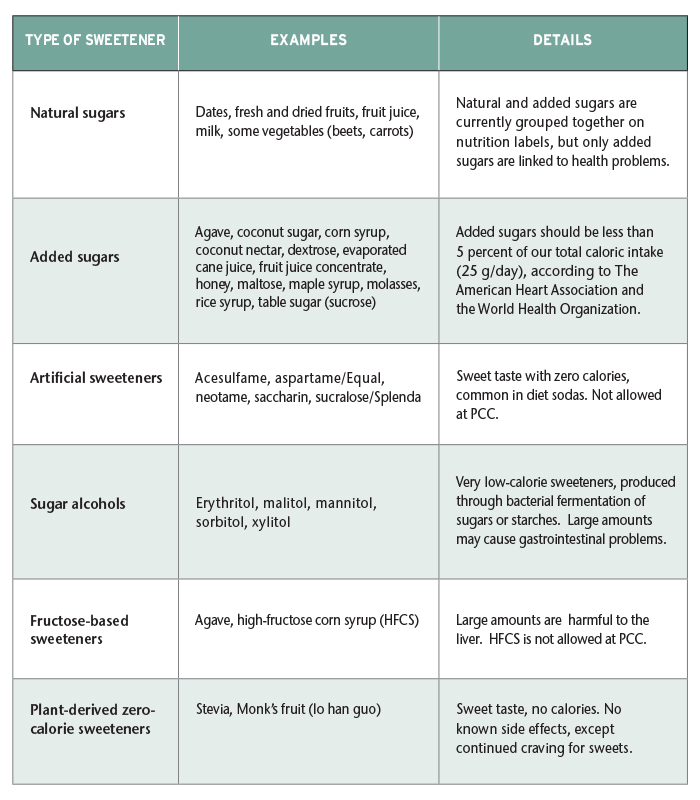Added sugars: Learn to subtract from your diet
by Nick Rose, M.S.
This article was originally published in October 2014
We all know that we should be eating less sugar, but keeping our added sugar intake below 5 percent of calories, as recommended by the American Heart Association (AHA), is challenging. A shocking 75 percent of packaged foods have some form of sugar added to the list of ingredients. Everything from applesauce to zucchini muffins is a potential source of added sugars, with a single serving of soda or even some “protein” bars containing more added sugars than we should consume all day! Unfortunately nutrition labels are not very helpful, because added and natural sugars currently are combined and reported as “total sugar.” But it’s only the added sugars that should be minimized.
Sweet sorrow
Researchers estimate that 15 percent of all calories consumed in the United States come from added sugars — triple the amount recommended by the AHA and the World Health Organization. Added sugars can cause cavities, weight gain, high triglycerides, diabetes, sleep disorders, yeast infections, acne and hair loss.
The newest research finds that sugar contributes to inflammation, exacerbating an even wider range of health problems. The AHA was the first group to recommend the 5-percent guideline for sugar intake, recognizing that sugar leads to inflammation, and inflammation leads to heart disease.
There are additional health problems linked to sweeteners dominant in fructose, such as agave and high-fructose corn syrup (HFCS). Agave initially was promoted as a healthy sweetener ideal for diabetics because it doesn’t raise blood sugar levels as much as table sugar. But agave contains 80 percent fructose, which in small amounts is not harmful, but in excessive amounts may be very harmful, especially to kids. Children consuming excessive amounts of fructose, primarily in the form of HFCS, are developing non-alcoholic fatty liver disease. This is becoming a major public health concern.
Parting with sugar
It’s tough to kick the sugar habit. Here are some tips to help subtract added sugars from your diet.
- Ditch soda (even diet), lemonade, sports drinks, sweet teas, etc. Switch to water, hot or iced unsweetened tea, sparkling water or kombucha — a carbonated, fizzy drink low in sugars and high in health benefits.
- Avoid artificial sweeteners. They sound great, but because your body isn’t getting any nourishment from them, your sugar craving isn’t being satisfied and you’ll continue craving sweets.
- Replace sweet snacks with savory snacks — chips with a bean dip, veggie sticks with nut butter or ranch dressing, or seaweed snacks. Over time, your taste buds will adapt and your sweet tooth will diminish.
- Eat fruit when craving something sweet. As Michael Pollan wrote in “Food Rules,” “if you’re not hungry enough to eat an apple, you’re not really hungry.”

